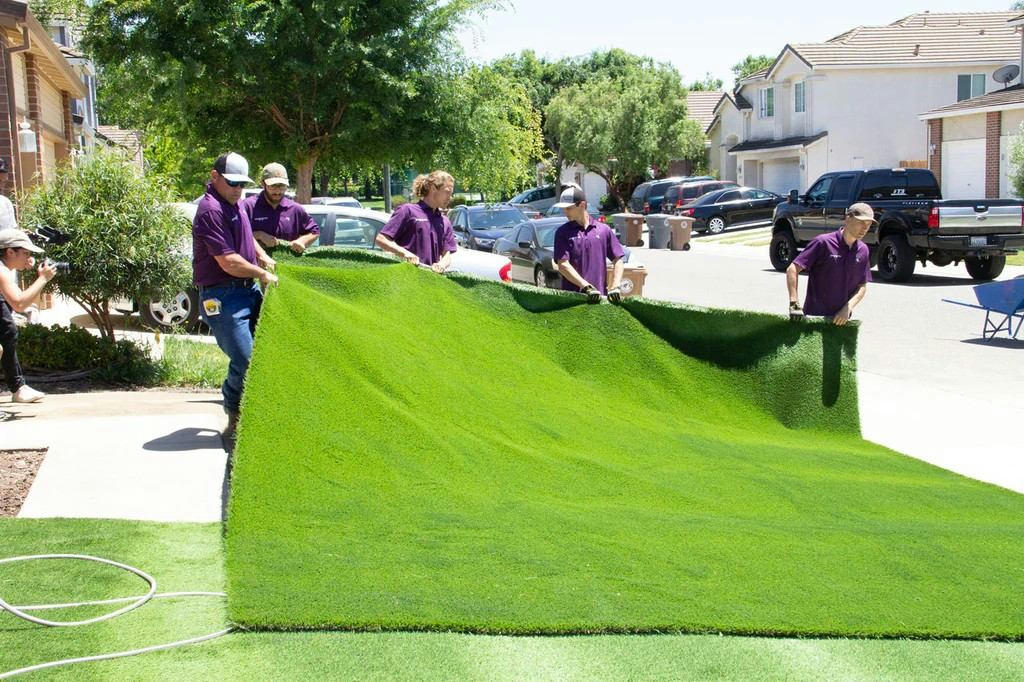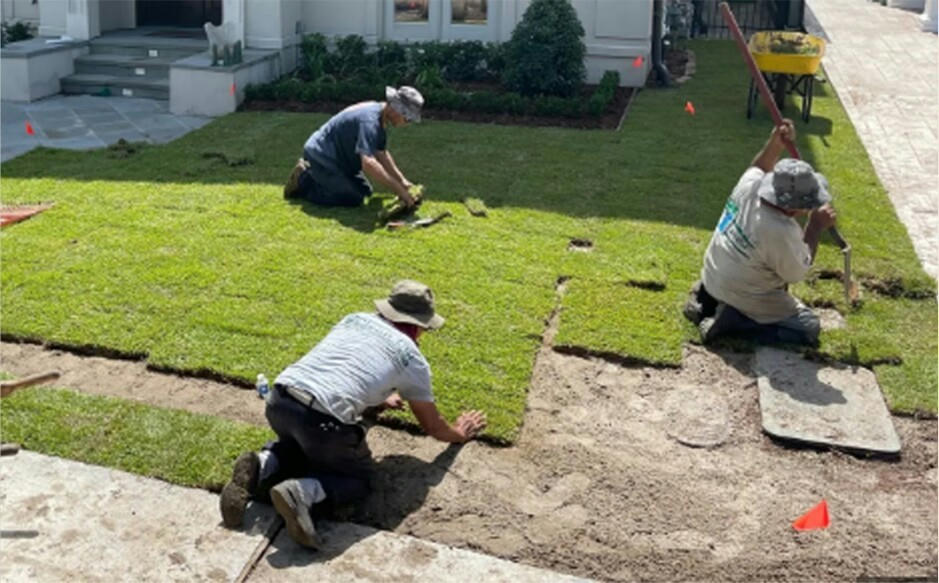A Guide to Hiring Artificial Turf Installers in the United States
Industry Background and Market Prospects
In recent years, the artificial turf installation industry in the United States has experienced explosive growth. With the acceleration of urbanization, the surge in demand for residential and commercial landscaping, and consumers' preference for low-cost, low-maintenance turf solutions, the artificial turf market continues to expand. According to the American Horticultural Society, the demand for artificial turf installation services has increased by about 12% annually over the past five years, and the market size is expected to exceed US$5 billion by 2030.

This growth is mainly due to many factors:
Economic and practical: The maintenance cost of natural turf (water bills, fertilizers, manual mowing) remains high, while artificial turf requires almost no maintenance after a one-time investment, which is especially suitable for arid areas and high-net-worth families.
Environmental protection trend: Water shortage issues have prompted governments and companies to reduce the use of natural turf, and artificial turf has become the first choice for water-saving landscapes.
Commercial application expansion: Stadiums, commercial complexes, hotels and other places tend to use durable and beautiful artificial turf.
In this context, professional artificial turf installers have become a scarce talent. Whether it is a start-up company or a large chain contractor, there is an urgent need for installers with technical experience and professional qualities.
Job Responsibilities
The core responsibilities of artificial turf installers cover the entire project cycle, and they need to combine physical strength, technical ability and detail control:
Preliminary preparation
•Measure the customer's site (courtyard, sports field, etc.), evaluate the terrain and soil conditions, and develop an installation plan.
•Clean up the debris on the site and deal with the foundation (such as compacting the ground, laying a drainage layer or buffer pad).
Material and tool operation
•Carry and cut artificial turf rolls to ensure seamless splicing and firm edges.
•Use special glue, nail guns or hot welding equipment to fix the turf, adjust the flatness and texture direction.
Detail processing and acceptance
•Fill with quartz sand or rubber particles to enhance the stability and simulation of the turf.
•Inspect the installation quality, repair problems such as warping and dents, and ensure that there are no safety hazards after delivery.
Job Requirements
Physical Strength and Endurance: Need to carry materials for a long time (load can reach more than 50 kg per day) and adapt to outdoor working environment (high temperature, humidity, etc.).
Technical Experience:
•Proficient in using power tools (such as cutters, nailers), measuring instruments and adhesives.
•Understand the characteristics and applicable scenarios of different turf materials (such as polyethylene, polypropylene).
•Safety Awareness: Comply with construction safety regulations and wear protective equipment (gloves, goggles) correctly.
Other Bonus Points:
•Hold a driver's license (need to provide your own vehicle to transport tools and materials).
•Candidates with basic landscape design knowledge or gardening experience are preferred.
Daily Work of a Lawn Installer
You can choose to work full-time or part-time, and the working hours are from 7:00 am to 6:00 pm. Overtime is also available.

Salary level
❇️Hourly wage: about 17-22/hour for newcomers, 25-35/hour for skilled workers (including overtime pay).
❇️Annual salary: The average annual income of full-time installers is 45,000-70,000, and management or technical experts can exceed $80,000.
❇️Regional differences: Salaries in dry climates and high-demand areas such as California and Texas are higher than those in the Northeast.
Benefits and career development
Basic benefits:
✔️Medical insurance, paid sick leave, retirement savings plan (401k).
✔️Dental insurance
✔️Health insurance
✔️Paid vacation
✔️Vision insurance
Incentive mechanism:
✔️Bonuses are issued according to projects (such as early completion rewards).
✔️Commissions can be obtained by recommending new employees.
Career growth:
⭕The company provides safety training and product certification courses (such as ICPI certification of the Artificial Turf Installation Association).
⭕Promotion path: Installer → Project Leader → Regional Manager.
Job search paths and channels
Online platforms
•Comprehensive recruitment websites: Indeed, LinkedIn (search keywords "artificial turf installer"), ZipRecruiter.
•Industry vertical platforms: Houzz, TradesmanJobs, which can directly connect with landscape contractors.
Offline channels
•Industry associations: Join the American Association of Landscape Contractors (ALCC) or the National Lawn Care Association (NLA) to obtain recruitment information from member companies.
•Local contractor cooperation: Pay attention to community bulletin boards, hardware store ads, or call landscape design companies directly to submit resumes.
Industry potential and personal opportunities
With stricter environmental protection policies and changes in consumer preferences, the artificial turf installation industry will continue to grow. For job seekers, this profession not only provides stable income and career advancement opportunities, but also has the following advantages:
Low threshold: No higher education background is required, and practical experience and skills training are emphasized.
Flexibility: Suitable for people who like outdoor work and pursue flexible working hours.
Technology transformation potential: After accumulating experience, you can turn to high value-added positions such as project management and product sales.
